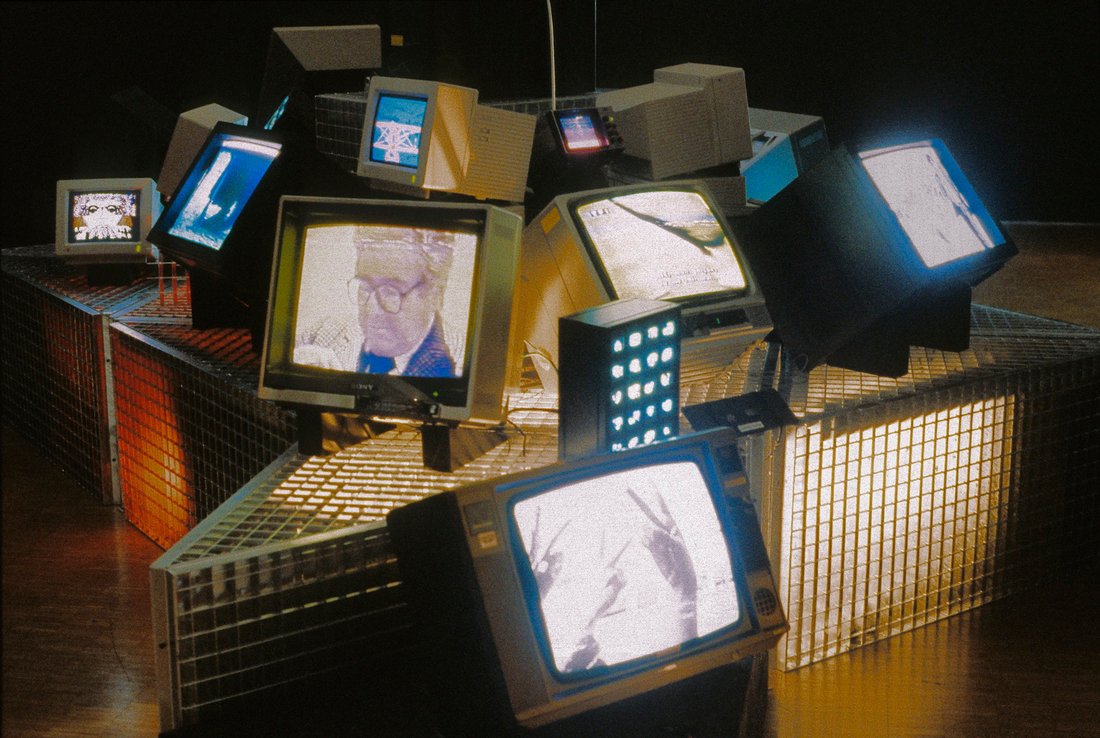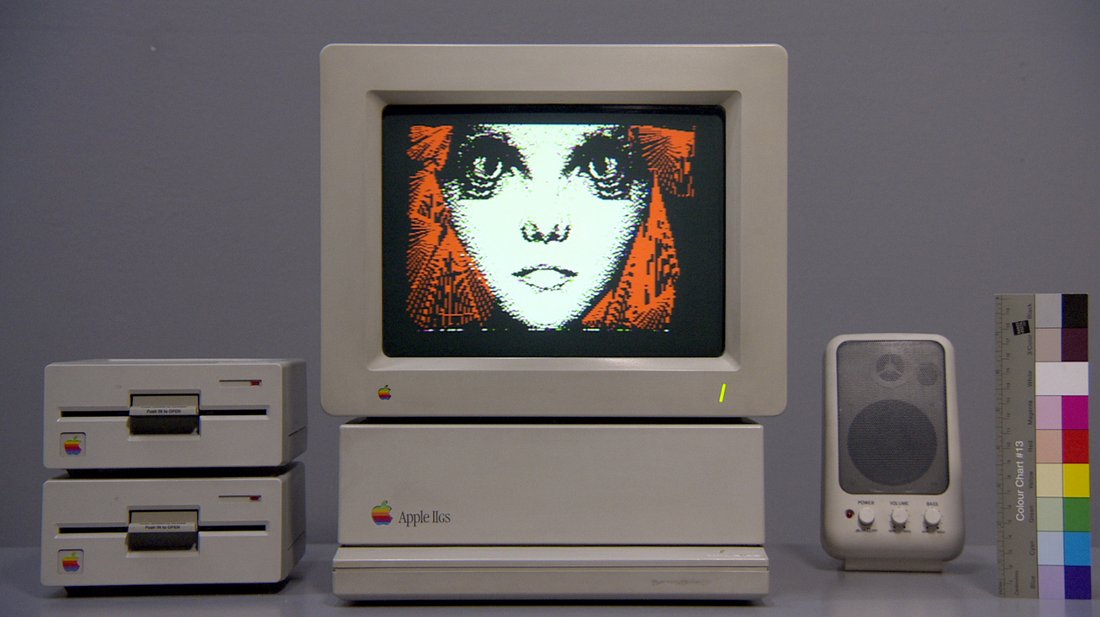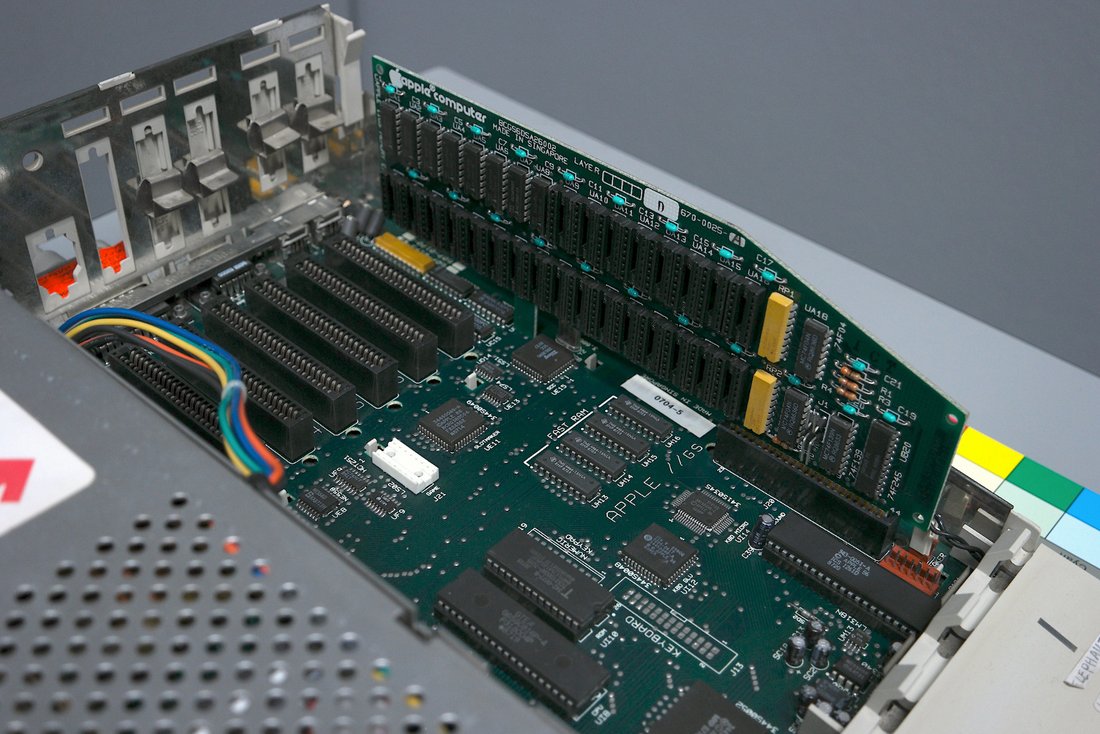Zapping Zone, Chris Marker
Proposals for the restoration and transfer of Zapping Zone by Chris Marker
Chris Marker’s work, Zapping Zone (Proposals for an imaginary television) was produced by the Mnam-Centre Pompidou in the framework of the exhibition "Passages de l’Image" in 1990. Composed of 13 television sets, 7 computer stations (Apple II GS), 4 luminous displays containing 80 slides and 10 photomontages, this large interactive installation marked the entry of digital script into the art field at the dawn of the World Wide Web. Up until 2007, and Chris Marker’s last presentation before his death, the artist produced endlessly, building up an archive of 183 disks of work.
Thanks to a grant from the PATRIMA LabEx , supported by the Foundation for Science & Heritage, the New Media Department of the Musée national d’art moderne is hosting two researchers, Agnès de Cayeux and Alexandre Michaan, for one year to work on the restoration and transfer of this major work from the Museum collections. The project is partnered by C2RMF (the French Museums Research & Restoration Centre).
Research on the work Zapping Zone currently revolves around an in-depth study of all the historical documentation held by the Centre Pompidou on the production and material history of the work. The aim is to promote these documentary resources and their online availability for researchers and the public. At the same time, a visual and technical documentation of elements such as IT programmes, photographs and video tapes, in addition to video and IT equipment, is being led in the framework of the project, in order to enrich and complete this historical information. In this regard, complete photographic and radiographic documentation of the Apple II GS, 7 of which were included in the installation, has been carried out at the C2RMF. A technical service of all the work’s original IT and video equipment has also begun, and will enable in particular the re-installation of Zapping Zone in keeping with its integral historical set-up (1990-1994), for an exhibition of the work planned for spring 2020 at the Centre Pompidou.
The exhibition of Zapping Zone, in its original technological form will, among others, provide an opportunity to present a selection of Chris Marker’s productions contained in the work and which have not been exhibited for almost 25 years. The historical documentary elements, collected and collated, in addition to those produced during the study, will be made available to researchers and the public at the end of the research project. A reactivation of the work’s IT content will also result in viewable versions of certain IT programmes produced by Chris Marker, which are currently obsolete and linked to the Apple II GS.
This process involves a critical examination of the origins of digital art and of the perpetuation of devices for the experimental use of emerging technology. Drawing on the ephemeral poetry of Chris Marker, the aim is to explore the survival of supposedly "bodiless works", i.e. audio-visual and digital works.
Researchers’ biographies
Agnès de Cayeux is a visual artist and researcher in digital art & cultures. She was awarded the 2007 SCAM interactive work prize, and designed the video-chat reading room In My Room with Arte France-Unité de Programmes Cinéma and DICREAM. She published Être mutant, moi connectée (L’Éclose, 2007). In 2007, she directed the film Justagurl23, and in November, in collaboration with the Paris-Villette theatre, explored the territory of networks as a new form of stage. She has worked for a long time with the director Jean-François Peyret. For a commission by the Jeu de Paume, she created the conversational agent, Alissa, a virtual figure inspired by literary and film subjects. In 2014, she participated in the reactivation of Chris Marker’s Dialector 6 programme on Apple II. She directed Une jeune femme vue du ciel in 2016, inspired by the scenario of Un amour d’U.I.Q by Félix Guattari. Following a Villa Médicis external residency in Greenland, she presented the installation Greenland Connect, at La Panacée – Centre de Culture Contemporaine de Montpellier.
Alexandre Michaan is a heritage restorer, specialised in the conservation of audio-visual and digital works. Following his studies in art history at the Ecole du Louvre and heritage restoration at the French National Heritage Institution, his work focuses on technological obsolescence issues related to new media in contemporary art. He has been working as a freelance restorer since 2014, with several institutions such as the Centre Pompidou, the C2RMF, the Musée d’Art Moderne de la Ville de Paris, the European Photography Centre and the French National Centre for Visual Arts.


